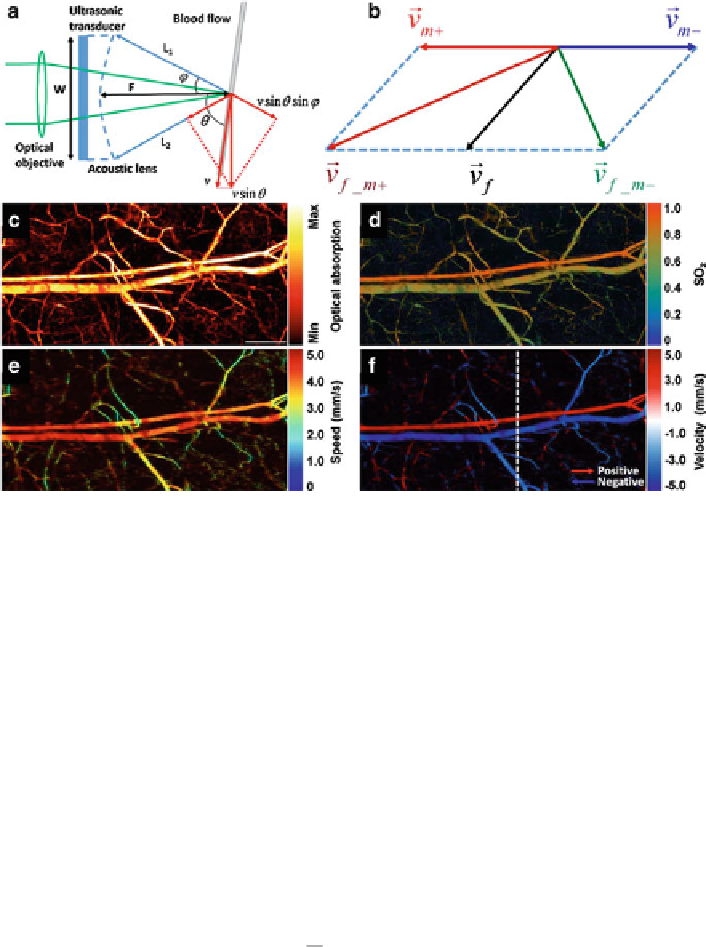Biomedical Engineering Reference
In-Depth Information
Fig. 2.5
(
a
) Schematic of the Doppler optical-resolution photoacoustic microscopy (OR-PAM).
(
b
) Bidirectional scanning for flow direction sensing. OR-PAM of (
c
) vascular anatomy,
(
d
) hemoglobin oxygen saturation (sO
2
), (
e
) blood flow speed, and (
f
) blood flow velocity with
directions in a mouse ear
where
v
f
is the flow speed of absorbing particles (e.g., RBCs for in vivo label-free
measurement of blood flow),
v
s
is the speed of sound, is the angle subtended by
the flow direction and the acoustic axis, ' is the aperture angle of the acoustic lens,
and f
0
is the center frequency of the ultrasonic transducer.
Four consecutive photoacoustic A-line signals (referred to the time-resolved
photoacoustic signals along the depth direction generated by individual laser pulses)
are bandpass-filtered (center frequency: 75 MHz; 3-dB bandwidth: 1 MHz) and used
to calculate PDB
ORPA M
at each given spatial location by
t
ˇ
ˇ
j D1
4
p
j
p
j C1
k
T
PDB
ORPA M
D
1
;
(2.6)
P
4
p
j
p
j
j D1
where T is the time interval between consecutive A-lines, k is a calibration factor,
and p is the Hilbert transform of A-line signal p. Thus, the flow speed
v
f
can be
computed by substituting the calculated PDB
ORPA M
to Eq. (
2.5
).


Search WWH ::

Custom Search